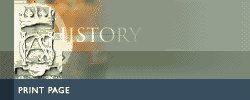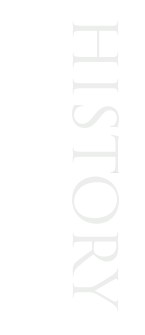|
The Flemish Origins
The
first two decades of the 12th century present us with a
significant series of marriages among the chief characters in what
we may here call the heraldic drama. On November 11, 1100, Henry
I, King of England, marries Malcom Canmore’s elder daughter, the
princess Matilda of Scotland; and thus, as their courtiers are
eager to point out, unites in their desendants the old and the new
dynasties of Britain. Little more than a year later, and fresh
from the triumphs of the First Crusade, it’s hero Count Eustace
III of Boulogne marries Malcolm Canmore’s younger daughters, the
Scottish Princess Mary. Eustace and Mary will have a son, Raoul,
and a daughter, Matilda; and the girl, outliving her brother, will
become not only her father’s and Countess of Boulogne in her own
right, but also, by her marriage to Stephen of Blois – William the
Conqueror’s grandson and successor on his throne to Henry I – a
future Queen of England. Thus, with Stephen and Matilda’s elder
son, their own Count, the intelligent and manly Eustace IV of
Boulogne, now heir to the English throne, the aspirations of the
Anglo-Boulonnais may at last be said to be fulfilled.
King Henry’s wife, Matilda of Scotland, died in 1118, and three
years later he reinforced the connection with his Flemish allies
by taking as his second wife Count Eustace’s cousin Adela,
daughter of Godfrey, Duke of Bas-Lorraine. Simon de Senlis was
also dead (he had succumbed in about 1111, at the outset o a
further trip to the Holy Land) and Maud, his widow, took as her
second husband the brother-in-law of Count Eustace and King Henry,
Malcolm Canmore’s youngest son, David, Earl of Cumbria. In 1124,
on the death of his brother Alexander, David ascended the throne
of Scotland as David I; so Maud of Lens, like her cousin Matilda
of Boulogne, became a British queen.
A complete list of those who traveled north with Maud and her
second husband is not quite within our grasp. But it would be
broadly true to say that of the Flemish Boulonnais so protectingly
established in the East Midlands, the exceptional families would
would be those who did not send a son or a brother to accompany
their Lady to her new home in Scotland. The intention, however
David may have sweetened it with offers of land, was again
protective.
We know that these people took with them the devices they had
already brought in 1066 from the comtes of Flanders; and more than
that, we can see with an astonishing clarity exactly how they used
them. One, at least, of the emblems was already there. Seier de
Lens, the young nephew of Count Eustace II who so mysteriously
disappeared after the Dover raid of 1067, had been in Scotland
since perhaps that date, as Seier de Seton, living in the fortress
he had built himself on the Firth of Forth which would later be
known as Seton Palace. Walter, his son and heir – Walter the
Fleming – succeeded him there, as he did at Odell Castle,
Bedfordshire; and there can be no doubt at all that his personal
heraldic emblem, the triple crescents, gules and a field or, of a
second son of the count of Boulogne, flew over both places.
Descendants of Seier’s younger son, Hugh, as well as those of his
younger brother, Walter, also used the triple crescents; but being
now outside the continental constraint of territorial tinctures,
they each changed the colours. Hugh and his family wore the three
red crescents on a silver field – a device which, incidentally,
flew from the masts of the Boulogne navy in their home port of
Huughescluis (so perhaps Hugh was their High Admiral). Old
Walter’s grandson, Walter de Preston, took the black and gold
colours of Flanders, and both crescents and tinctures survive in
the arms of his descendant, the premier viscount of Ireland,
Viscount Gormanston. Some of Hugh’s heirs acquired the surname of
Legh (or Lea), and took the crescents with them when they moved
into Cheshire; here the tinctures moved away from the old
tradition into azure and sable.
more >
|


